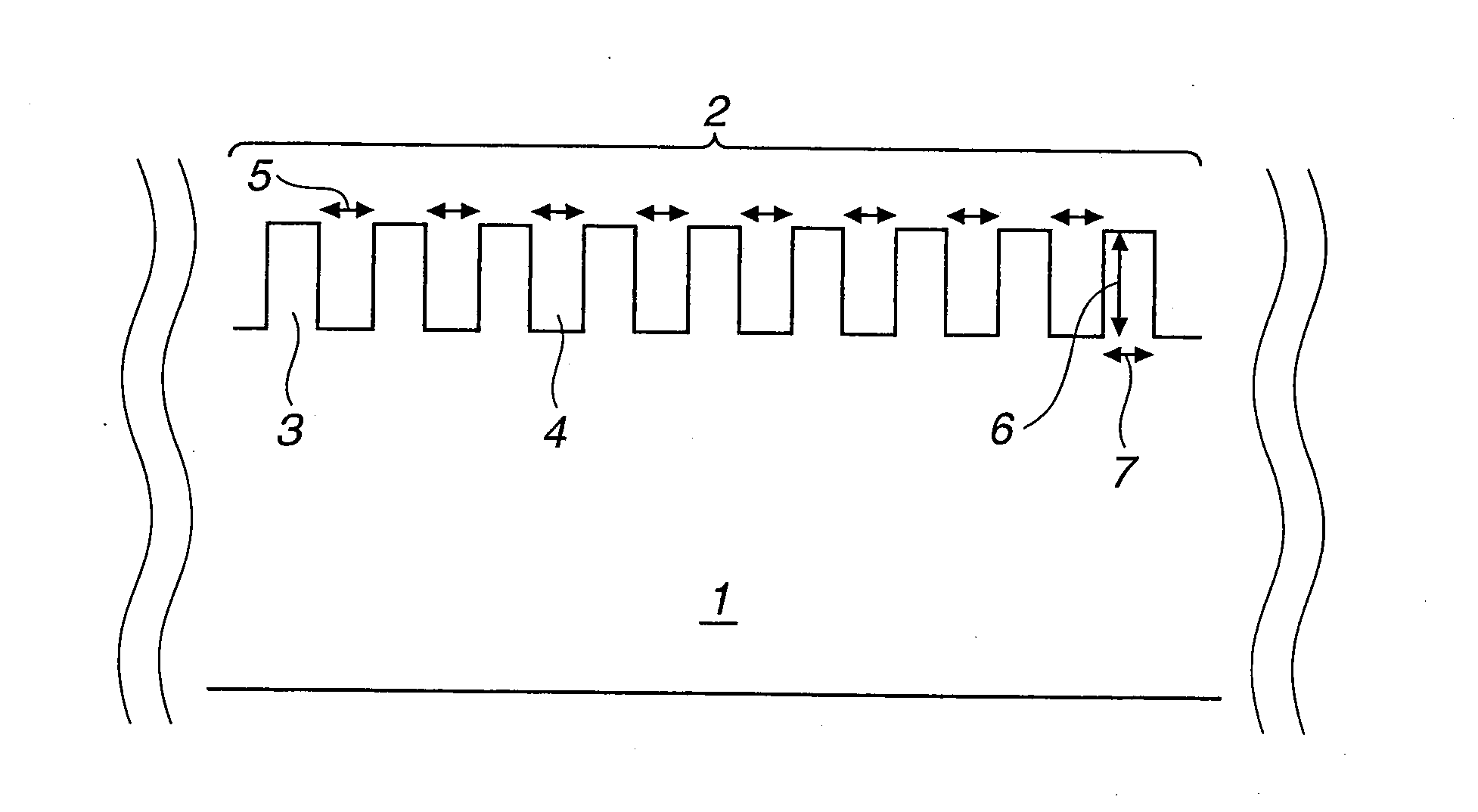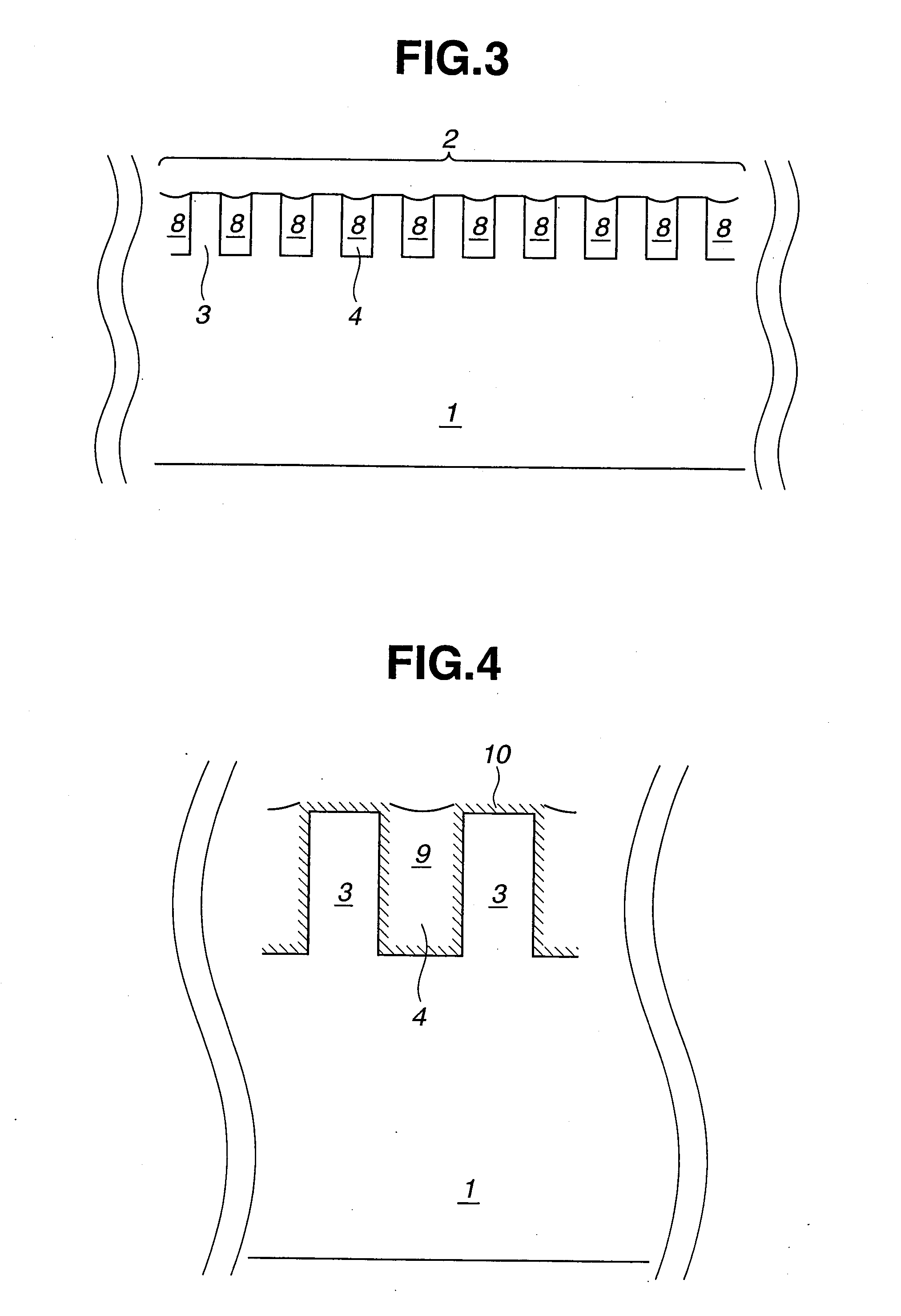Cleaning Agent For Silicon Wafer
a cleaning agent and silicon wafer technology, applied in the direction of detergent compounding agents, liquid cleaning, detergent compositions, etc., can solve the problems of increasing the aspect ratio, the damage to the wafer due to cleaning, and the basicity of the wafer is getting serious, so as to achieve the effect of reducing the capillary force and short tim
- Summary
- Abstract
- Description
- Claims
- Application Information
AI Technical Summary
Benefits of technology
Problems solved by technology
Method used
Image
Examples
example 16
[0150]The manner was all the same as Example 14 with the exception that CTFP was used as the organic solvent other than the alcoholic solvent in the water-repellent cleaning liquid. As shown in the evaluation result of Table 1, the contact angle after the surface treatment was 72° and therefore the water repellency-providing effect was exhibited. Additionally, the capillary force at the time where water was retained was 1.0 MN / m2 and therefore the capillary force was small. Additionally, the contact angle after UV irradiation was smaller than 10°, so that removal of the water repellency-provided surface condition was achieved. Furthermore, the Ra value of the wafer after UV irradiation was smaller than 0.5 nm, with which it was confirmed that the wafer was not eroded at the time of cleaning and that the residue of the water-repellent cleaning liquid did not remain after UV irradiation.
example 17
[0151]The manner was all the same as Example 15 with the exception that 1-propanol (nPA) was used as the alcoholic solvent. As shown in the evaluation result of Table 1, the contact angle after the surface treatment was 80° and therefore the water repellency-providing effect was exhibited. Additionally, the capillary force at the time where water was retained was 0.6 MN / m2 and therefore the capillary force was small. Additionally, the contact angle after UV irradiation was smaller than 10°, so that removal of the water repellency-provided surface condition was achieved. Furthermore, the Ra value of the wafer after UV irradiation was smaller than 0.5 nm, with which it was confirmed that the wafer was not eroded at the time of cleaning and that the residue of the water-repellent cleaning liquid did not remain after UV irradiation.
example 18
[0152]The manner was all the same as Example 17 with the exception that CTFP was used as the organic solvent other than the alcoholic solvent in the water-repellent cleaning liquid. As shown in the evaluation result of Table 1, the contact angle after the surface treatment was 78° and therefore the water repellency-providing effect was exhibited. Additionally, the capillary force at the time where water was retained was 0.7 MN / m2 and therefore the capillary force was small. Additionally, the contact angle after UV irradiation was smaller than 10°, so that removal of the water repellency-provided surface condition was achieved. Furthermore, the Ra value of the wafer after UV irradiation was smaller than 0.5 nm, with which it was confirmed that the wafer was not eroded at the time of cleaning and that the residue of the water-repellent cleaning liquid did not remain after UV irradiation.
PUM
| Property | Measurement | Unit |
|---|---|---|
| Percent by mass | aaaaa | aaaaa |
| Percent by mass | aaaaa | aaaaa |
| Pressure | aaaaa | aaaaa |
Abstract
Description
Claims
Application Information
 Login to View More
Login to View More - R&D
- Intellectual Property
- Life Sciences
- Materials
- Tech Scout
- Unparalleled Data Quality
- Higher Quality Content
- 60% Fewer Hallucinations
Browse by: Latest US Patents, China's latest patents, Technical Efficacy Thesaurus, Application Domain, Technology Topic, Popular Technical Reports.
© 2025 PatSnap. All rights reserved.Legal|Privacy policy|Modern Slavery Act Transparency Statement|Sitemap|About US| Contact US: help@patsnap.com



